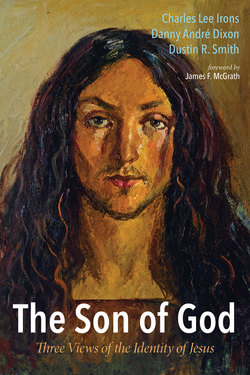The Son of God

Реклама. ООО «ЛитРес», ИНН: 7719571260.
Оглавление
Charles Lee Irons. The Son of God
The Son of God
Table of Contents
Foreword
On the Labels
English Versions of the Bible
Abbreviations
A Trinitarian View
An Arian Response to a Trinitarian View
A Socinian Response to a Trinitarian View
A Trinitarian Reply
An Arian View
A Trinitarian Response to an Arian View
A Socinian Response to an Arian View
An Arian Reply
A Socinian View
A Trinitarian Response to a Socinian View
An Arian Response to a Socinian View
A Socinian Reply
Bibliography
Index of Ancient Sources
Index of Authors
Index of Subjects
Отрывок из книги
Three Views of the Identity of Jesus
A Trinitarian View by Charles Lee Irons
.....
At this point, the ontological deity of the eternal Son has been proven. Yet the New Testament has still more to say to “seal the deal.” The ontological deity of the eternal Son receives explosive confirmation from the Father’s exaltation of his obedient, incarnate Son. As pointed out earlier, the New Testament envisions the Son as having a three-stage career: (1) the preincarnate state of the Son, with God the Father before and at creation, (2) the first phase of his incarnate state, that is, his earthly ministry, and (3) the second phase of his incarnate state, that is, his exaltation at God’s right hand. The first and the third states are closely related. In fact, Aquila H. I. Lee has convincingly argued that the exaltation of Christ was one of the key factors that led the primitive church to the belief in his eternal preexistence.31 Some have attempted to argue for a two-stage Christology that eliminates the preexistence phase. But this would mean that a human being has been exalted to a position of divine honor that does not properly belong to him according to his ontological nature. In other words, they argue for the deification of a mere man, a belief that would be more at home in a polytheistic context (recall the ancient Romans’ belief about the apotheosis of Romulus after his death). But the exaltation of Christ, with its implication of divine status, cannot be interpreted as an apotheosis. Such a construction would be conceptually and theologically impossible within the context of an early Christian movement composed of Jewish believers raised in and committed to the strict monotheism inherited from Judaism. Therefore, the exaltation of Christ must be interpreted along different lines. Rather than viewing his exaltation as an apotheosis, we must view his exaltation is the manifestation and confirmation of his identity as the divine Son of God. Paul speaks of this as his having been “marked out (horisthentos) Son of God in power . . . by his resurrection from the dead” (Rom 1:4).32 There are several features of the exaltation of Christ which demonstrate that his divine honors in the state of exaltation are appropriate based on his ontological deity as the preexistent Son.
There is only one ultimate power in the universe—only one sovereign, one king. God is “the blessed and only sovereign” (1 Tim 6:15). Thus it is remarkable that the exalted Lord Jesus shares the divine sovereignty with the Father. In fact, it was his own Father who granted him to sit at his right hand until his enemies are made the footstool of his feet in fulfillment of Ps 110:1. This crucial Old Testament verse is quoted or alluded to some twenty-two times in the New Testament with reference to Jesus. Jesus’ exalted position at God’s right hand and his consequent authority and sovereignty over all things are astonishing. No mere creature could be given that divine authority as Lord of all creation. The exalted Lord Jesus received the divine sovereignty from the Father (Matt 28:18), not as a temporary gift granted to a mere creature, but because he is the firstborn, that is, the rightful heir, of all creation through whom all things were created (Heb 1:2–3; Col 1:15–16).
.....